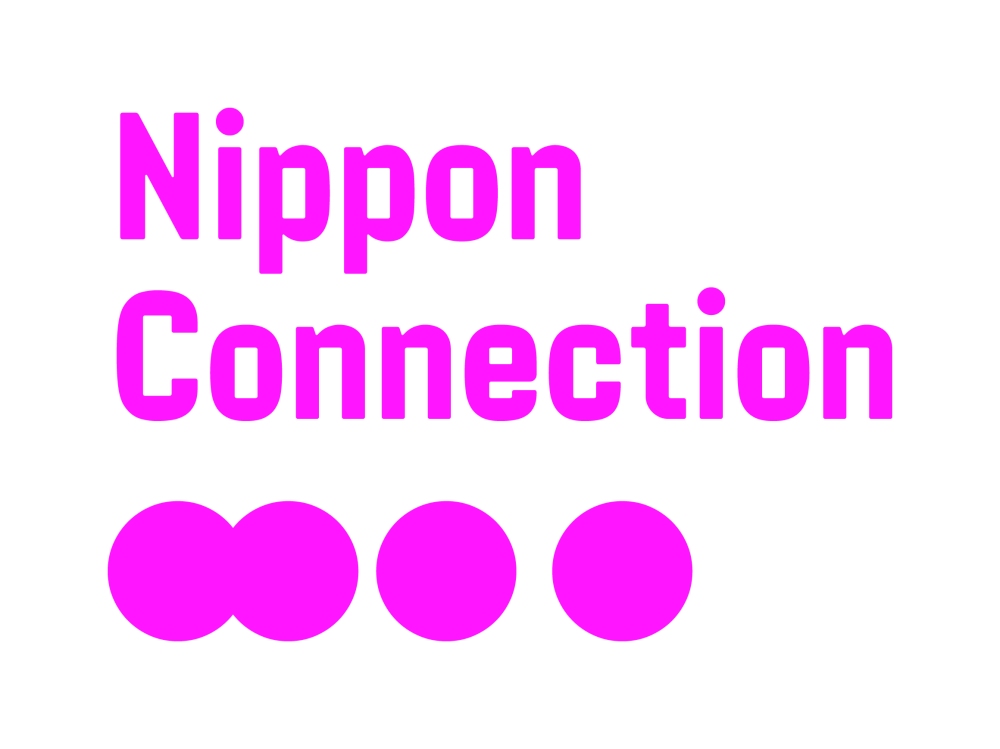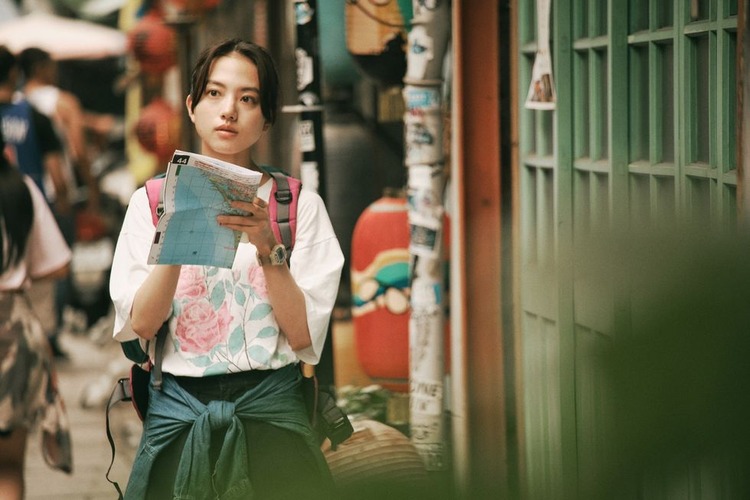The romance genre in Japan is plagued by extremely predictable melodramatic tearjerkers. The popularity of these films lies in the fact that the narrative ‘twist’ of the death of one of the lovers is exploited to make the spectator believe, for a fleeting moment, that the unwritable sexual relationship could have been written. It is, in fact, by confining the romantic encounter to the phase of being drunk on each other’s idealized image that such narratives succeed in reflecting the radically fictive possibility of a harmonious sexual relationship.
Yet, this narrative dynamic does not only structure the romantic tearjerker, but is in play in almost every narrative that aims to explore the dimension of love. The challenge for the filmmaker working in the romance genre is thus not to subvert this essential narrative dynamic – doing so would, in fact, destroy the emotional impact of the depicted romance, but approach it in such a way that it does not feel forced, that it does merely seem a “twist” to force tears.
Michihito Fujii, known for narratives like The Journalist (2019) and The Family (2020), succeeded in give this narrative dynamic an effective twist in The Last Ten Years (2022). With 18×2 Beyond Youthful Days, a movie based on a travelogue published on the internet by Taiwanese video game developer Jimmy Lai in 2014, Fujii aims, once more, to prove that romance narratives can exploit the narrative element of a lover’s death in a more elegant and emotionally satisfying way.
The narrative of 18×2 Beyond Youthful Days commences when Jimmy (Greg Hsu), one of the founders of a video game company, is fired by his own board of directors. Dejected and disoriented, he returns to his parental home and stumbles, while tidying his room, on an old postcard from Ami (Kaya Kiyohara), whom he fell in love with 18 years ago. On his final business trip to Japan, Jimmy decides, much to the surprise of Aaron, the studio’s co-founder, to embark on a trip through Japan without any destination – traveling is fun because you never know what will happen.
18×2 Beyond Youthful Days delivers a tragedy of the unrealized romantic encounter, of how a subject’s inhibition thwarts the trust of his desire and unintentionally sabotages the romantic opportunity, rendering the established of the romantic relation within the symbolic impossible. Yet, the tragical dimension – the nostalgic forlornness that lingers around a past romantic failure – is contrasted with the celebration of the act of traveling, of the encounters that may occur on our path and the space the traveling subject creates to submit himself to moments of introspection and the slow working-through of unresolved conflicts and trauma.
To allow the spectator find its bearing in Fujii’s narrative, it is important to analyse the flashback fragment – i.e. the fleeting image of Jimmy with a woman on a scooter – that disturbs the opening sequence of the narrative. This fleeting moment, when analysed correctly, enables the spectator to grasp Jimmy’s subjective logic. The sudden boiling up of nostalgic images, arising after the radical complication of his ego, his signified, does not simply confront Jimmy with his ‘lost’ longing, but implies that the chasing of his dream forced the silencing of his romantic desire. It is because his ego has turned into a depressed void that an unresolved struggle can break through to his consciousness.
By associating this fleeting flashback-event with the signifiers on Ami’s postcard, one can argue that the focus on his dream to be a successful game-creator was, at first, nothing but a support to realize his romantic desire – i.e. to proof his desirability to Ami. If so, why did his dream eventually start to consume him, giving his acts and signifiers their violent quality and repressing the true aim of his endeavour – the Other’s love in the shape of Ami?
Jimmy’s sudden decision to travel around Japan without a clear destination is without a doubt determined by this sudden infraction of his lost romantic past – i.e. the flashback concerning the scooter as well as the handwritten signifiers on the postcard. Yet, it should be clear that Jimmy does not merely utilize the return of Ami’s signifiers – traveling is fun because you never know what will happen, I want to reassess my own subjectivity – to give his ego some sense and direction, but to install a situation where his enclosed desire might find a chance to burst forth. Jimmy, thus, embarks on this trip not merely to reminiscence his youthful past with Ami and the birth of his gaming company, but to force an opportunity for himself to give his ‘imprisoned’ desire a renewed aim.
The composition of 18×2 Beyond Youthful Days stands out due to its retrained dynamism and the countless beautiful moments of visual poetry (e.g. the visual homage to the opening sentence of Yasunari Kawabata’s Snow Country).
Yet, what gives Fujii’s visual fabric its true visual power is its darkish lightning-design and the faded quality of his colour-palettes. By extracting the vibrance of the colours and bathing his scenes in blueish colours, Fujii does not only seek to craft visually pleasing shots by playing with subtle colour-gradients, but also allows a certain moodiness, a subtle flavour of melancholy, to seep into the narrative’s atmosphere.
The visual fabric and the sorrowful musical decorations are, in fact, instrumental in amplifying the desolation and disorientation that echoes within certain signifiers. It is due to the interaction of both elements that the voice-over staging Jimmy’s inner monologue, this dialogue with no address yet, succeeds in reverberating his frail mental state, the state of feeling confused and disorientated by the sudden sabotage of his sole subjective aim, the supposed but mistaken goal of his desire.
Fujii visually separates the unfolding of the present from the explorations of the past by giving his flashback sequences a faded yellowish tint – the flashback sequences sharing the same faded colour and darkish lighting-design. The shift from dark blueish to subtle yellowish tints is furthermore instrumental in giving the atmosphere of the present and the past a different quality. The desolateness and depression that lingers in the present and poisons adulthood is contrasted with the warmer youthfulness of the past – the poetic feeling of seishun.
Yet, the attentive spectator will notice that there are moments in the present which have a yellowish tint and moments in the past draped in blueish colours. While, at first, these exceptions merely seem to serve the demands of the scene or the spatial environment, these colour-shifts function as subtle indications of Jimmy’s unvocalized subjective mood. Colour-shifts and facial expressions associate together to evoke the unspoken emotions and sensible inhibitions.
What makes romance narratives effective is not so much the chemistry between the two leads, but the ability of both actors to invite the spectator’s identification. Kaya Kiyohara is not merely charming, but her charm invites the male spectator to identity with Jimmy, to desire Ami from his position. The spectator, who accepts this invitation, will have no problem to grasp that her seductive nature, the playfulness by which she keeps her subjectivity close to her chest, arouses love and desire but, at the same time, short-circuits the inter-subjective encounter. Jimmy is thus not merely caught within the imaginarily web of her charming image, but is unable to penetrate through it and invite signifiers wadded with her subjectivity.
18×2 Beyond Youthful Days proves that the tropes of the romance genre can still be exploited in a refreshing and emotionally satisfying manner. By combining satisfying performances, a visually pleasing composition, and a great narrative structure together, Fujii ensures that his latest has to counted among the best in the genre.
Notes
Narra-note 1: At one point in the narrative, Jimmy vocalizes the following sentence: “I found my dream thanks to her”. While this appears to be a complete statement, it completely erases the reason why he could find his dream: “…, so that I can proof that I’m worthy of her love”.
Narra-note 2: The spectator will, eventually, realize that Ami’s use of ‘kareshi’ (boyfriend) within her conversations with Jimmy has a hidden meaning – the signifier is pregnant with her unsaid subjective struggle.
Narra-note 3: For the female subject, the dynamic of identification is different. One can argue that Kaya Kiyohara invites the female subject to identify with position and gain pleasure from being desired by Jimmy or Greg Hsu.





3 Comments Add yours